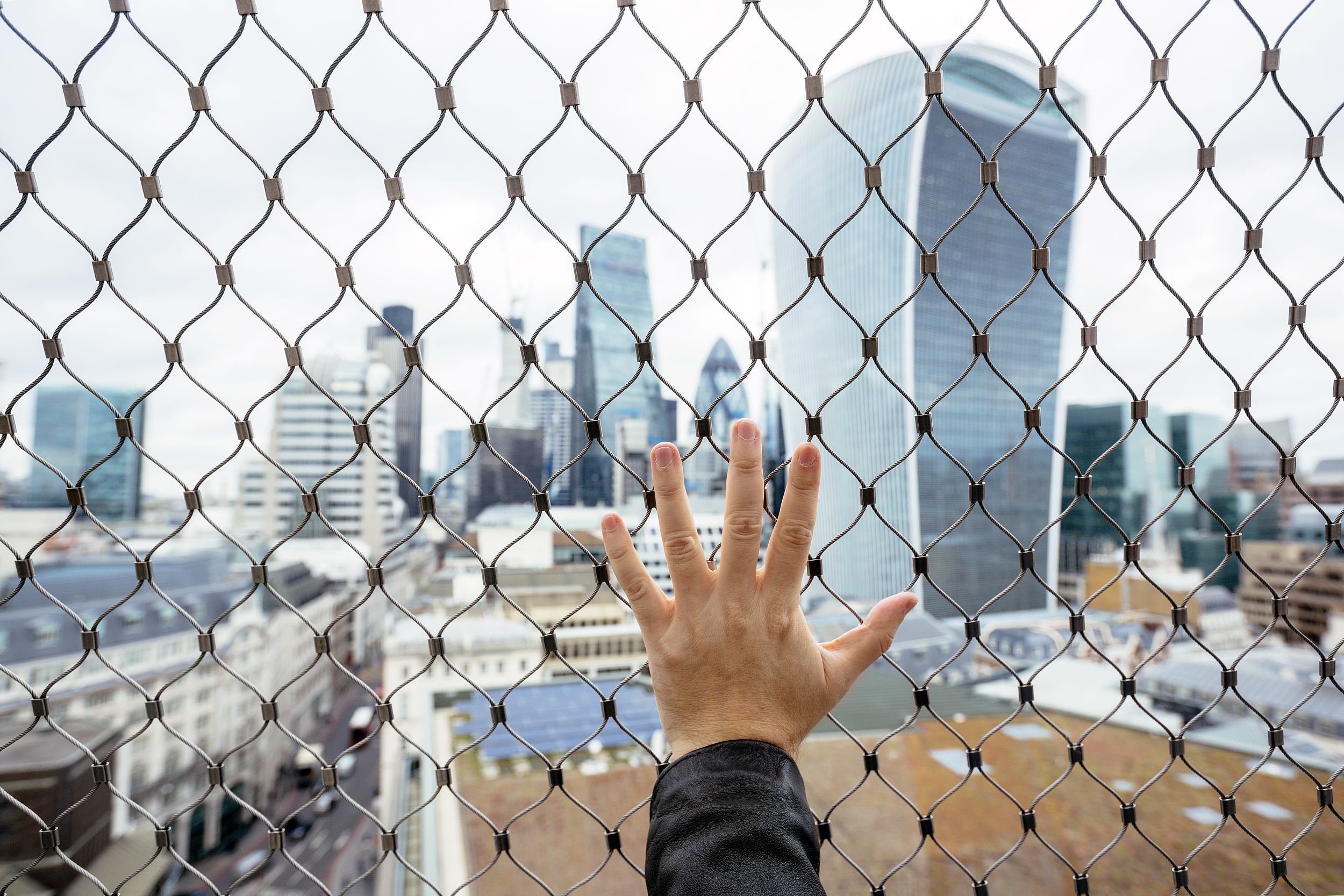
More than 40% of people living in major European cities have thought about moving away due to the pandemic, a new study shows. /stockstudioX| / Getty Creative / VCG
More than 40% of people living in major European cities have thought about moving away due to the pandemic, a new study shows. /stockstudioX| / Getty Creative / VCG
More than 40 percent of people living in major European cities have thought about moving away due to the pandemic, a survey has shown, as lockdowns leave more and more urban dwellers dreaming of life outside the metropolis.
Half of people living in London, Paris, Milan, Madrid and Berlin said the measures to tackle coronavirus in the cities had made them increasingly worried about air pollution and overcrowding, according to the survey by British engineering firm Arup.
Out of the cities polled, people in London were most likely to consider living in a smaller town with better access to nature and other amenities.

"The pandemic has brought home the way in which our living environments can be disrupted," said Arup's urban design leader Malcolm Smith, adding people were returning to the importance of living near essential services such as shops and green spaces.
Interviewing 5,000 people in five cities, the poll found that two-fifths of respondents in the British capital said they had temporarily left for a less densly populated area since the coronavirus outbreak, compared with only about one in 10 in Milan and Madrid.
This was in part because of the commute time Londoners face when trying to reach services such as green areas, gyms, cafes and grocery stores.
"During lockdown, we felt quite isolated in our residential area, with amenities really far away," said Bryndis Sadler, 27, who left the London suburb of Acton to buy a home about 64 kilometers north in Hertfordshire in October.
Around 85 percent of the respondents said the pandemic had highlighted the importance of living within walking or cycling distance of a green area, with the poll finding that it took Londoners an average of 20 minutes to get to a park or play area, almost twice the time for residents of the other four cities.
Some 59 percent of Londoners said they dreamed about escaping the city, in comparison with 41 percent of Parisians and 30 percent of Berliners.
Read more: COVID-19 and the city: How pandemics could break up our metropolises

The pandemic has highlighted the importance of developing cities in smaller, more liveable modules that would be more resilient in the face of future pandemics and climate change, say experts. /Alexander Spatari/Getty Creative/VCG
The pandemic has highlighted the importance of developing cities in smaller, more liveable modules that would be more resilient in the face of future pandemics and climate change, say experts. /Alexander Spatari/Getty Creative/VCG
"One of the overwhelming advantages of city living is proximity," said Harriet Tregoning, director of the New Urban Mobility alliance, a network of cities, companies and advocacy groups promoting "liveable cities."
"The idea of the 15-minute city is resonant particularly during COVID-19, when more people are at home and looking to shop, travel, and recreate as locally as possible."
But despite London's drawbacks, Philipp Rode, who runs LSE Cities, a research center at the London School of Economics, said it was too early to talk of a flight from the city.
"This data speaks for, maybe less a decline, a potential decline of population, but just a higher churn rate, a changing rate of the existing population," he said.
However, Smith stressed the pandemic has highlighted the importance of developing cities in smaller, more liveable modules that would be more resilient in the face of future pandemics and climate change.
"In the 19th century, the response to cholera in London brought big infrastructure, the sewer network," he said. "I hope COVID-19 will lead to lots of smaller-scale but widespread interventions – bringing green spaces to gray places, the prioritization of cycling and walking and the revaluing of local amenities."
Source(s): Reuters

